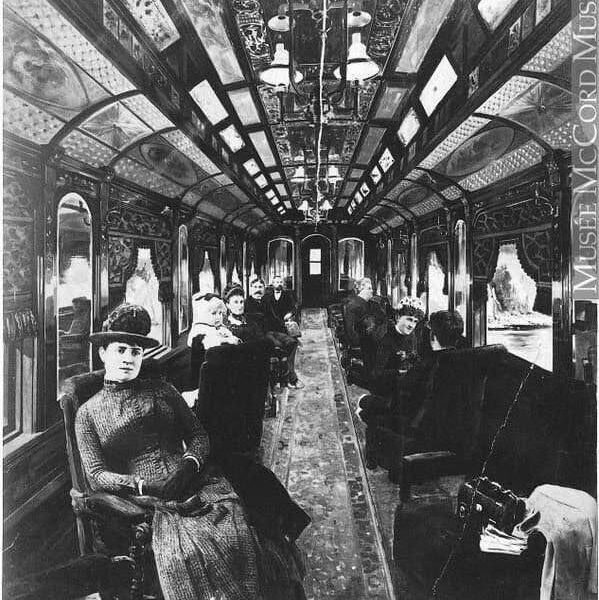Inside a Train, 1800s
The experience of traveling by train in the 1800s was a fascinating glimpse into the transformation of transportation and society. As railways expanded across continents, trains became the lifeblood of commerce and migration, connecting distant towns and cities like never before. Stepping inside a train during this era was to witness a world of progress, class divisions, and the charm of early rail travel.

The Interior and Atmosphere
Train interiors varied depending on the class of travel. First-class carriages were often luxurious, adorned with plush seats, velvet drapes, and polished wood paneling, offering a comfortable and refined experience for wealthy passengers. Second- and third-class accommodations, however, were far more modest, with wooden benches, minimal decoration, and sometimes overcrowded conditions. The steady rhythm of the train’s wheels on the tracks created a constant background noise, while the occasional gust of smoke and soot from the locomotive filtered through open windows.

Passengers and Social Interaction
Trains in the 1800s carried a diverse range of passengers, from businessmen and aristocrats to farmers, immigrants, and laborers seeking new opportunities. Conversations in first-class compartments often revolved around politics, industry, and culture, while third-class travelers exchanged stories of hardship, adventure, and aspirations for a better life. Despite the social divisions, trains served as an equalizer in some ways, bringing together people from all walks of life for the shared experience of long-distance travel.

Challenges and Comforts
Train travel in the 19th century was both an adventure and a challenge. Journeys were long and sometimes uncomfortable, especially for those in lower-class seating. Coal-powered engines meant that soot and smoke could seep into compartments, and heating was minimal in winter months. However, the expansion of rail networks led to improved conditions, with the introduction of dining cars, sleeping compartments, and more efficient ticketing systems by the late 1800s.
A Symbol of Progress
Despite the hardships, traveling inside a train in the 1800s represented progress and possibility. Railroads revolutionized the way people moved, making distant lands more accessible and fueling economic growth. The hum of conversation, the clatter of wheels, and the anticipation of reaching a destination all contributed to the unique and transformative experience of 19th-century train travel.

